October in Kruger National Park is a time of extraordinary natural beauty and wonder. As the northern hemisphere prepares for the transition to winter, South Africa is transitioning into summer. This marks the return of numerous migratory bird species to the magnificent Kruger National Park.
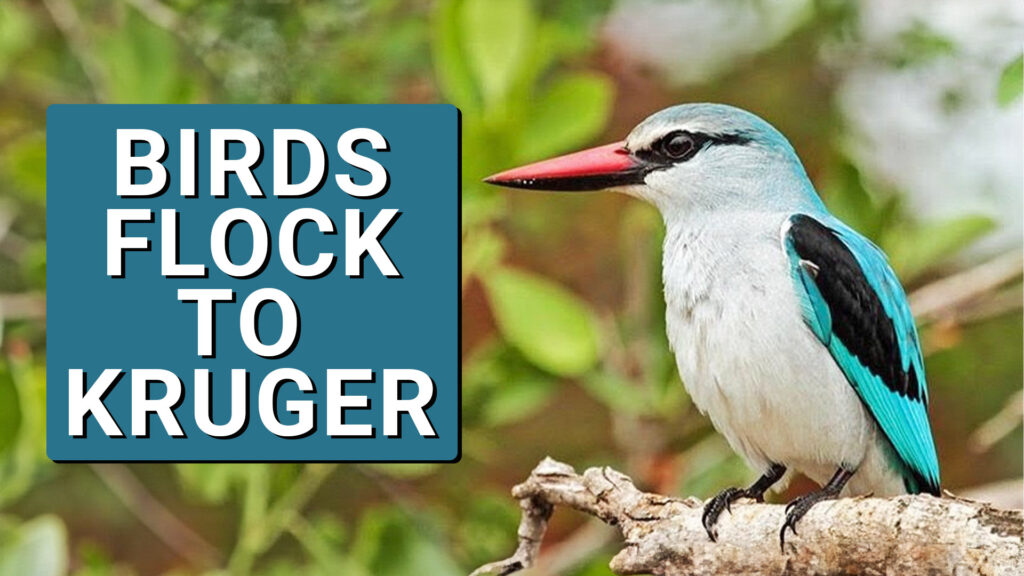
Bird migration is a remarkable phenomenon that has puzzled scientists for centuries. Simply put, it is the seasonal movement of birds from one region to another, typically driven by the need to find better food sources, suitable breeding grounds, or to escape harsh weather conditions. The reasons for migration are varied and complex, but it ultimately boils down to survival. Birds embark on these incredible journeys, often covering thousands of miles, to ensure their species’ continuation.
Here is a list of some of these incredible birds that will be arriving this October to the Kruger National Park, so be sure to keep an eye out for them!
See amazing bird exclusive content on ourBird TingsYouTube channel
European Bee Eater (Merops apiaster)
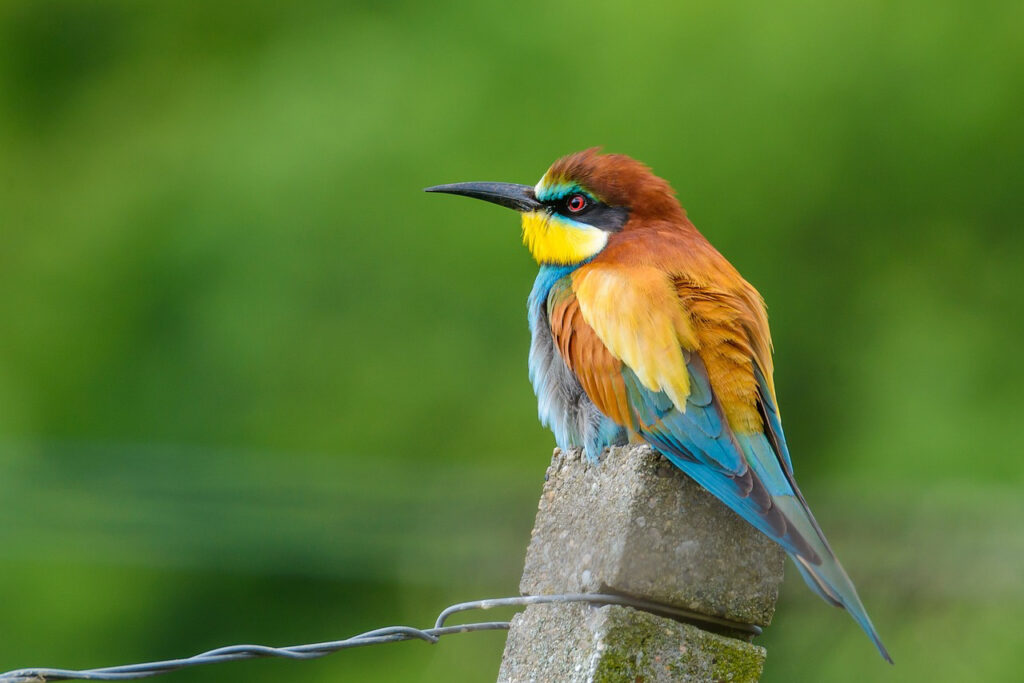
Look for these vibrant birds in open woodlands, savannas, and grasslands. They thrive in Kruger National Park’s diverse landscapes. A good road to consider for these birds is the H7 tar road from Orpen to Satara and, in the south, the S119 Gardenia Hide road. European Bee Eaters usually return to Kruger National Park in mid-October after spending their breeding season in Europe and Asia.
Fun Fact: These aerial acrobats are renowned for their remarkable hunting technique, catching bees, wasps, and other flying insects’ mid-air with astonishing precision.
Red-chested Cuckoo (Cuculus solitarius) Piet My Vrou
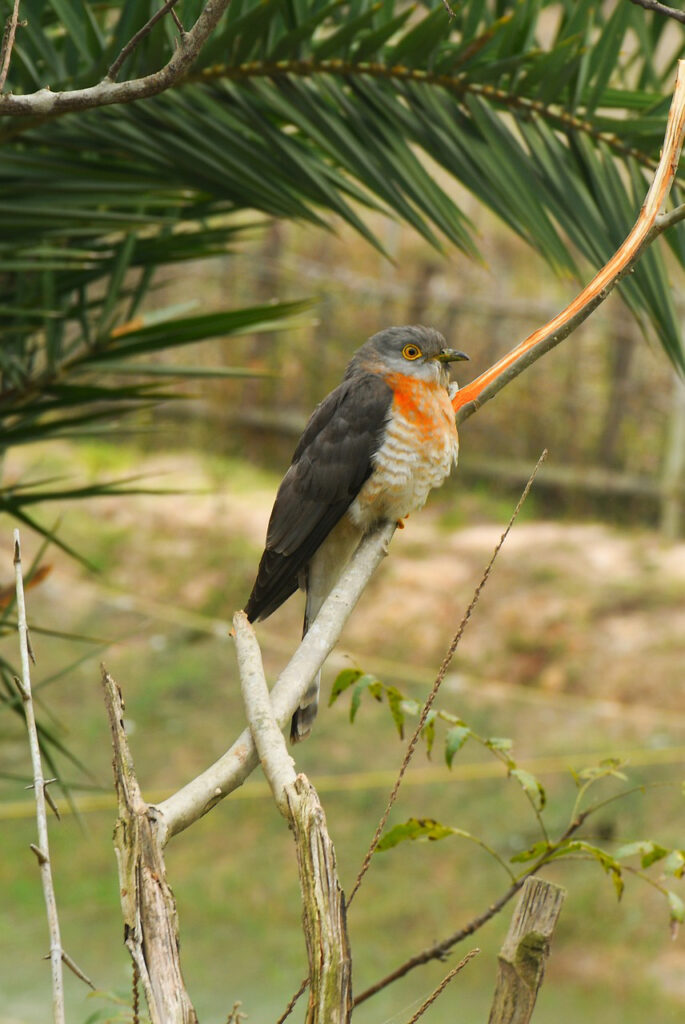
Seek out the Red Chested Cuckoo in dense thickets and woodlands, particularly near water sources. The roads around Skukuza Rest Camp can be a good starting point when looking for these birds. This bird makes its return to Kruger National Park around the first weeks of October.
Fun Fact: Known for its distinct call, the Red Chested Cuckoo is often associated with rain, as its song is believed to herald the coming of wetter weather.
Paradise Flycatcher (Terpsiphone viridis)
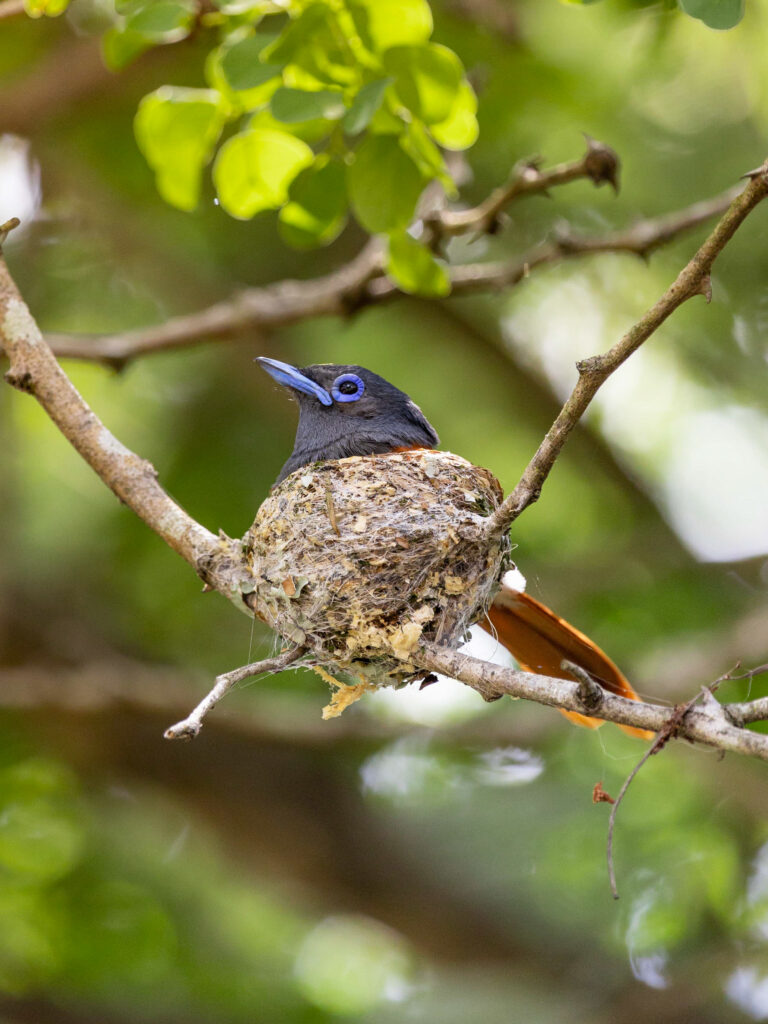
You can spot these elegant birds in forested areas, riverine woodlands, and the lush regions of the park. The massive trees that envelope the roads around the Shingwedzi Rest Camp are a great place to look. Paradise Flycatchers usually return to Kruger National Park from September to October.
Fun Fact: These flycatchers are known for their elaborate courtship displays, which involve intricate aerial maneuvers to attract a mate.
Violet-Backed Starling (Cinnyricinclus leucogaster)
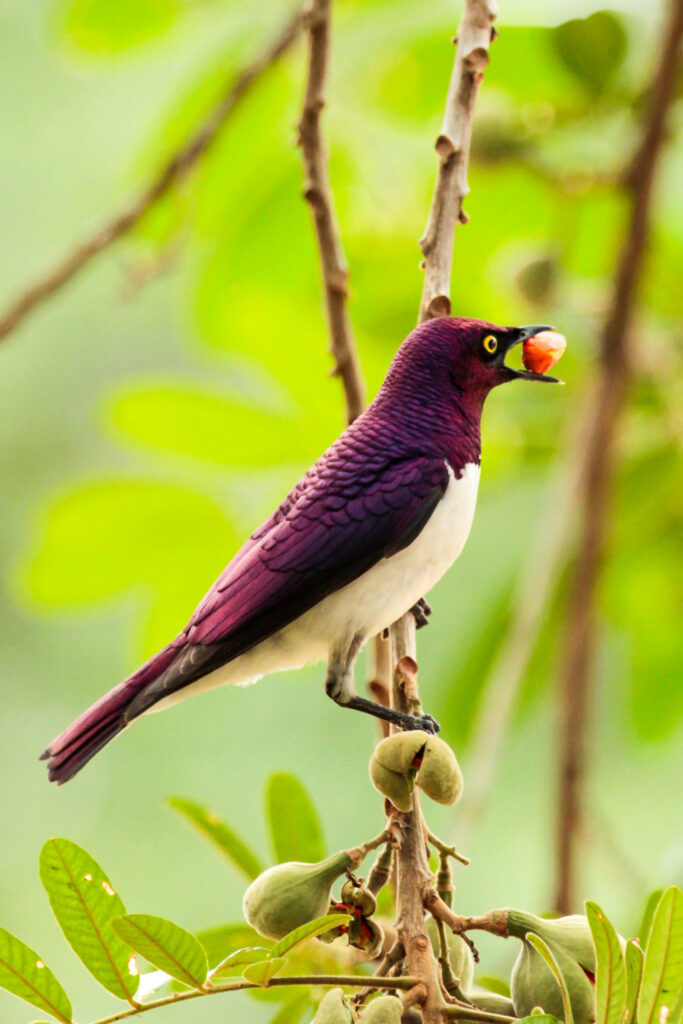
These stunning birds prefer woodlands, savannas, and open areas with access to water.
One of the recommended locations in the park for searching is around the Timbavati Picnic Site, as people often see them jumping around here in the early hours of the morning. You can expect to see the Violet-Backed Starling back in Kruger National Park from October through November.
Fun Fact: Their iridescent violet plumage is a sight to behold, especially when they catch the sunlight.
Woodland Kingfisher (Halcyon senegalensis)

Look for Woodland Kingfishers in open woodlands, grasslands, and along rivers and watercourses. Driving almost any of the roads in the Kruger will result in a sighting. The H1-2 along the Sand River or even up north along the Ngotso Spruit on the S147. These migratory birds return to Kruger National Park in late October. A tip to keep in mind, listen carefully when searching for these birds as their iconic calls are a great help in identifying and locating them.
Fun Fact: Despite their name, Woodland Kingfishers don’t primarily feed on fish but instead target a variety of insects and small vertebrates.
Wahlberg’s Eagle (Hieraaetus wahlbergi)
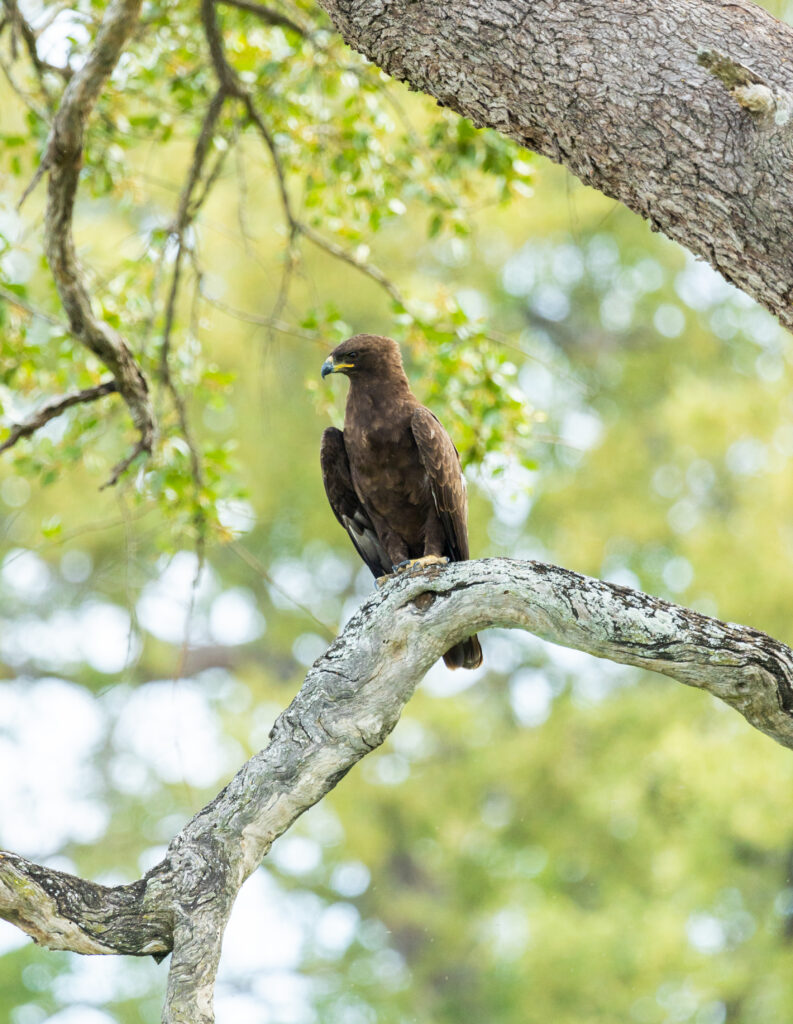
These impressive raptors inhabit open woodlands and savannas. Birdwatchers can start their search for this sought-after bird in various regions of the park, as the H3 tar road or the H6 tar road both offer the perfect habitat for these raptors. Wahlberg’s Eagles typically return to Kruger National Park around October.
Fun Fact: They are known for their powerful and agile flight, often soaring high in search of prey.
Book a Safari this October for a Chance to See these Birds
Reasons for the migration
Several factors influence the timing and success of bird migration. These include changes in temperature, daylight hours, food availability, and genetic predisposition. Birds possess a remarkable ability to navigate across vast distances using celestial cues, landmarks, and even Earth’s magnetic field.
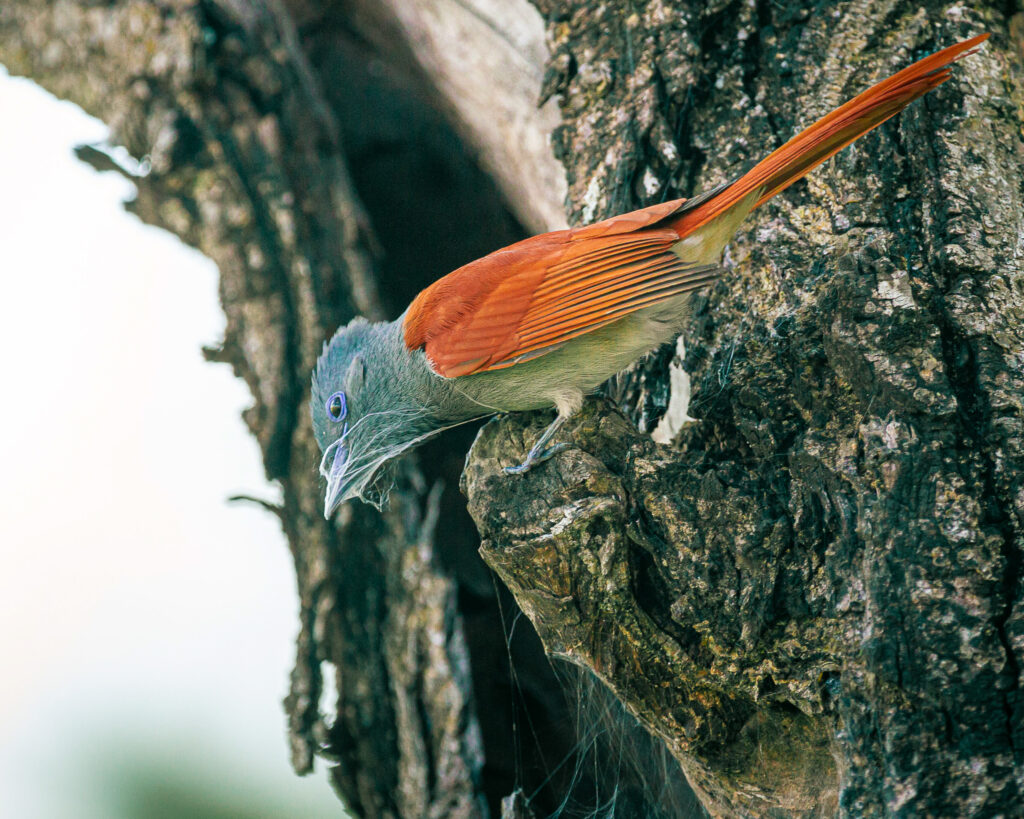
Kruger National Park in October is a birdwatcher’s paradise. The return of migratory birds brings a vibrant burst of color, life and sound to this already captivating wilderness. As you explore the park’s diverse terrain and ecosystems, keep your eyes peeled for these remarkable birds.
